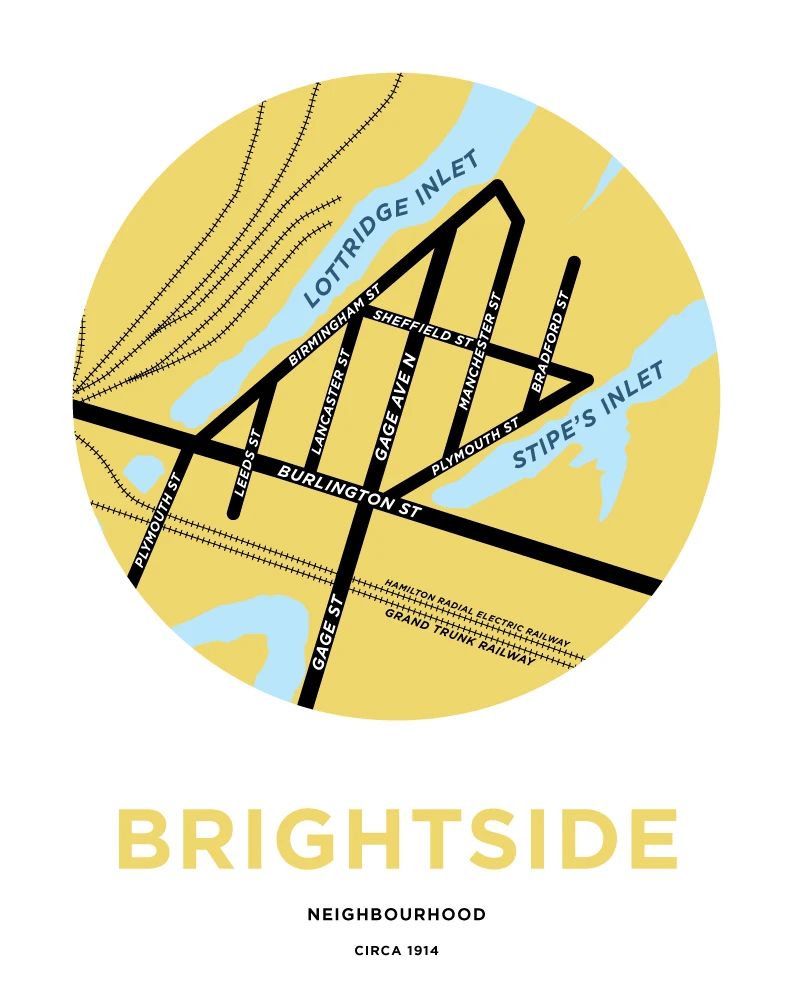Brightside no longer exists as a physical neighbourhood, yet it is one of the more vibrant communities in Hamilton. How is this, and what is the story behind this community?
The neighbourhood itself was mostly demolished and paved over in the 1960s as Hamilton's industrial sector expanded and the industrial highways made wider.
Sixty years later, the children of Brightside (and even their children's children) keep this community vibrant with their gatherings, events, remembrances, and one of the most active Facebook groups in Hamilton.
Thus, it is fitting the second chapter of Reclaiming Hamilton is about Brightside, and Brightside is only Hamilton neighbourhood to have a chapter dedicated to it in this book.
McMaster professors Nancy B Bouchier and Ken Cruikshank bring their academic style of writing to this chapter, with 104 footnotes reflecting the determined work of the Brightside community to maintaining the memory of their past.
In doing so, they created the wealth of materials which enable professional researchers to explore this community further, in a way that is quite unique for a working class neighbourhood. While the memory of many of Hamilton's industrial communities will be forgotten, Brightside will not. (I think about the Club Continental at Gage and Gertrude as an example of how quickly the past of the Industrial Sector D - as it is known - has faded and likely been lost forever)
The chapter explores how power has been exercised in Hamilton, who exercised that power, and to what end. It builds upon their 2016 book, The People and the Bay: A Social and Environmental History of Hamilton Harbour, in which they devoted a few paragraphs on Brightside.
Myself, I quite enjoyed reading the recollections of Brightside residents as children, especially as they shared about their explorations of the industrial area. See, I lived briefly at Sherman Avenue North and Imperial Street, and some of the places they discuss, while I explored them as a eight and nine-year-old. Thus, when they speak of houses no longer there, streets which no longer exist, and the ability to wonder which modern liability laws has ended, I can relate.
In many ways, what makes this chapter special is that Brightside is locked in time, it ended when Hamilton was at its industrial peak. We can enjoy the nostalgia without directly confronting the present.
We can feel good about the outcome, that the people of Brightside remain a strong community despite the destruction of their neighbourhood because of their stiff working class ability to move forward despite the injustice of how their parents and grandparents were treated.
Brightside's end was decided by Hamilton's politicians and business leaders in an exercise of power which forced residents to slowly leave their neighbourhood - once leaders decided Brightside was needed for industrial and road expansion, land values were depressed and financing became near impossible for residents to access - a common story of how power is used against working people.
Much of Brightside became parking for Stelco employees, and what did not become parking was taken up by the expansion of Burlington Street and Industrial Drive to move cars and trucks.
The chapter does more than just discuss the end of Brightside. The exploration of the founding of Brightside as a subdivision is fascinating. From the developer's seeking "desirable" immigrants to live in the community, the marketing to "the mechanic and workingman", to how the people were treated by other parts of Hamilton.
The social life of the community - it taverns, gatherings, and sports leagues - give us a glimpse into the life of its working class residents.
The civic strife which consumed Hamilton after the Second World War, and the pivotal 1946 Stelco Strike, are told in Brightside. The events themselves happened in Brightside where one of the key gates into Stelco existed. The strife saw neighbour pitted against neighbour, divides many would take to their graves.
In 25 pages, the authors enable us to know this neighbourhood, and thanks to the footnotes, invite us to explore it further.
The decline in bowling is often used as a metaphor for the decline in social interaction between people of different backgrounds in our society. Robert Putnam's book Bowling Alone being the foundation text of modern study in this field. Residents of Brightside founded a bowling league, which continued to play until the lanes closed in 2019.
It is interesting to note that the story of Brightside, and the continuance of Brightside as a community without a geographical location, mirrors the challenges facing our wider society. When Hamilton celebrates its bicentennial in 2046, we can expect many books to be written, and the next chapter on Brightside will have to be part of them as well.
Once the Hamilton Public Library local archives reopens, post-COVID, I look forward to reading the program of the 1983 Brightside Reunion, which the reunion committee created and deposited a copy with the Hamilton Library.
DISCLOSURE: I wrote a chapter of the book, I gain no payment from sales.
